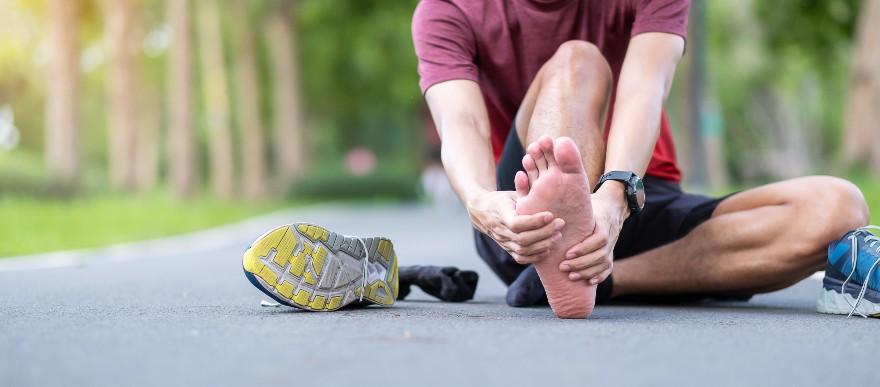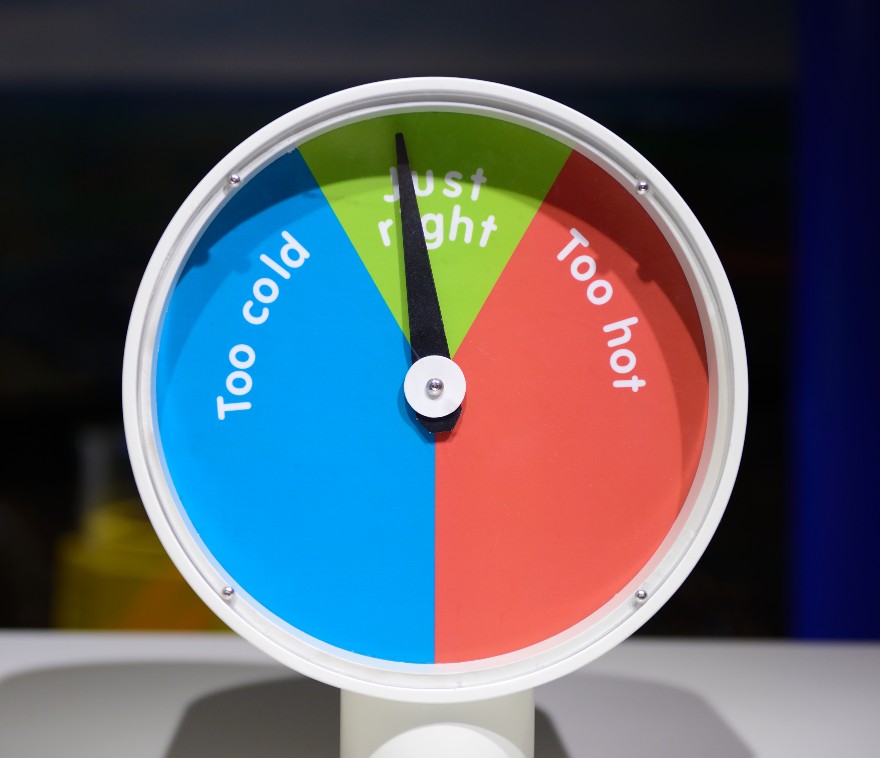
Heel pain. Ugh. It’s excruciating first thing in the morning. Sitting is fine but the first 20 steps afterwards is terrible. It gets worse the longer you stand. Running is out of the question. You tried once out of frustration but you paid for it the next day when you could barely walk.
You Google plantar fasciitis and the first thing that comes up is a link to the Mayo Clinic which pretty much describes all the symptoms you are experiencing. It then talks about the possibility of heel pain being a stress fracture but this is not common. Sometimes a doctor may prescribe an x-ray or ultrasound but then it also says that it’s not always necessary. It then goes on to list a plethora of possible treatments that can be tried but you have no idea how any of these apply to you.
Sound familiar?
“I want a new foot” said my patient who is an avid runner. Her heel pain started out of the blue one day after a run. “Nothing unusual – just a usual 5k which I have been doing for months.”
The first thing she tried of course was stretching because pain always makes things feel tighter. Then she tried rolling the foot with an icy cold glass bottle “as per Google.” None of this worked so she tried “deep tissue sport massage” but the foot always felt worse afterwards from the hard pressure. Her doctor said her x-rays were negative and that she should stop running for 2 months. She tried running exactly one day after 8 weeks but her pain was still there.
What to do? Elevation Physiotherapy to the rescue!
Patient: “Not running is killing me. I want a new foot.”
Physio: For sure, no problem. We specialize in amputation and replacement. Same size, same color?
(Laughter)
Okay, now that we have established that this foot is great but just needs proper care, let’s get down to business. First requirement? Patience. And lots of it. You see, plantar fasciitis is a difficult problem because we don’t have a 3rd leg we can use while the painful one gets better.

Second requirement? Education. The key to your foot getting better is the Goldilocks principle: don’t overload the foot but underload it either. Let’s figure out how much you can exercise/walk/run etc so that you always pass the 24 hour test (after each bout of exercise, your pain level cannot exceed more than 2 points using the 0-10 pain scale and it has to return to your usual baseline pain within 24 hours afterwards). This requires a lot of discipline and monitoring and attention. The all-or-none approach – rest and do nothing or run anyway and just push through the pain – never works.
Third requirement? It depends on each person. Sorry. No cookie cutter approach here. No fixed templates. No “routine plantar fascia programs” will work. What we do next depends on each person’s individual findings and unique life and sport circumstances. I wish I could give you “5 quick ways to fix your plantar fasciitis.” Imagine the clicks and downloads and shares! But that’s click bait. Besides, you already YouTubed it and it wasn’t quick. Otherwise, you wouldn’t be here.
The good news is that our runner eventually returned to running again pain-free after 6 months of care. Here is how we did it:
Early stage:
- Temporary insole: our patient had a reduced arch on the inside of her foot due to months of pain and reduced activity and so her foot muscles weakened and her arch lowered. The foot bed supported her arch to provide her with some relief and to further reduce the lowering and pain.
- Biking: She did intervals where she rode off the bike seat to activate and strengthen her foot muscles but without the weight bearing and impact loads that aggravates her pain. We had to modify how long and hard she rode so that we always passed the 24 hour test. She failed only twice because let’s face it, she’s a runner and she was never short on motivation. She just needed to stay disciplined.
- Shockwave Therapy: It’s been months since her pain onset and so we started with a low dose to re-stimulate the body to heal the chronically thickened fascial tissue with a partial thickness tear that was found on ultrasound.
- Manual therapy and dry needling: The months of pain that caused her to limp resulted in a very stiff mid foot and tight muscles. This combined with the insole provided her with at least a 30% reduction of her pain after only the first session.
- Calf stretching: We found a shorter, tighter calf muscle on the affected side. However, we had to protect the foot arch muscle from further stretching because it was already over-stretched and lowered. So we ensured she did this while using her footbed/insole. To simply stretch the calf muscle without supporting the arch would have worsened her pain. Are you starting to see how a cookie cutter/calf stretch exercise from a Google approach does not work???
- Strengthening: This is incredibly important. We taught her how to activate her foot arch muscles to raise her arch and keeping it raised while adding calf strengthening exercises.
Middle stage:
- Walking intervals: 1 minute slow/1 minute fast. We started with 10 minutes and we progressed each day as long as she continued to pass the 24 hour test.
- Shockwave: We increased the intensity of the waves since her ability to tolerate loads was improving.
- Stretching: We changed it from 20 second holds to only 5-8 seconds to keep it dynamic and not static since her calf muscle length was now equal. Dynamic stretching reduces soft tissue resistance and improves strength without lengthening/weakening the foot muscles.
- Strengthening: We progressed all of her exercises. Her arch muscle now was doing very well. We increased the weights she was using, added inclines and declines to her program and we added a hip/core program as well. A lot of her exercises were now done on a single leg. The weeks of “do-nothing and rest” approach resulted in weakness and deconditioning of the entire affected side.
Final stage: All of the above but including the following:
1. Run/walk program: a graduated and carefully monitored program where she would start with only 1 minute of running/1 minute of walking and the repetitions of these would increase with each run, if possible. We would either regress or remain at the same interval if she failed the 24 hour rule.
Fortunately, our runner was successful in returning to full running again pain-free in 6 months since the first day we met her. Unfortunately, we do encounter some people who despite our best efforts, have symptoms that do not fully resolve. What next?
Platelet-rich plasma (or PRP). This is an injection technique performed by sport medicine physicians where a blood sample is removed from the patient, and then it is placed in a centrifuge to concentrate the plasma with platelets. This is then re-injected into the painful/injured site. Currently, the evidence supporting PRP injections is better than cortisone. But the success of PRP is better when combined with an individualized rehab program as described above.

So, there you have it, folks. No amputation and replacement needed. Is it hard work? Yes. Like most things in life, hard work, discipline, patience when combined with excellent care will work for the majority of these conditions. Injections should always be reserved only if conservative management does not fully meet your goals. No click bait here. Just a well reasoned, personalized approach to care that combines current best practice guidelines and best available scientific evidence under the hands of a skilled physiotherapist who understands runners and in partnership with a disciplined/compliant patient. That’s the recipe for success.
References:
We have a lot….and if you are really interested, let us know!
Submitted by Katelyn Rennie and Albert Chan
